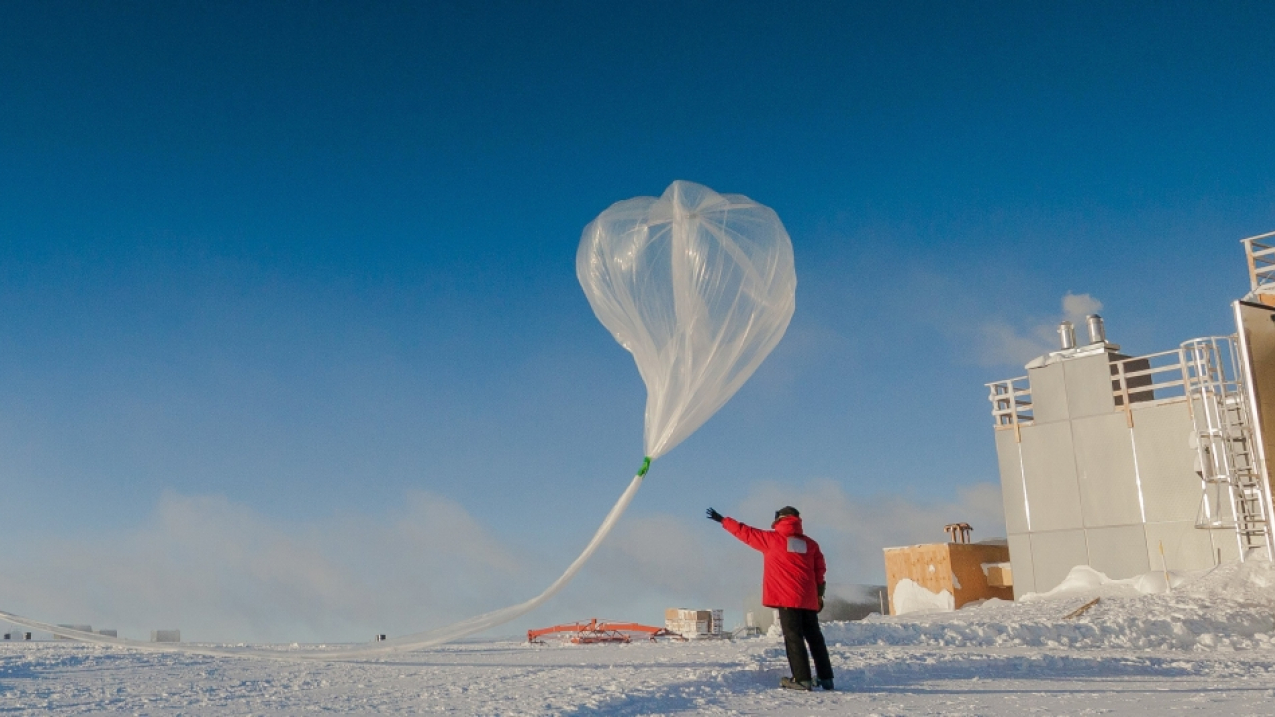
Researchers release a weather balloon carrying an ozone sonde, a lightweight sensor, during the 2016 ozone hole research season at the South Pole. (Image credit: Courtesy of Kyle Obrock/ASC)

An official website of the United States government
Here’s how you know
Official websites use .gov
A .gov website belongs to an official government organization in the United States.
Secure .gov websites use HTTPS
A lock () or https:// means you’ve safely connected to the .gov website. Share sensitive information only on official, secure websites.

Researchers release a weather balloon carrying an ozone sonde, a lightweight sensor, during the 2016 ozone hole research season at the South Pole. (Image credit: Courtesy of Kyle Obrock/ASC)
For the past 25 years, NOAA and NASA scientists have measured the size and duration of the ozone hole that forms over Antarctica every September. This year falls squarely into the middle of the pack.
And that’s good news.
The 2016 Antarctic ozone hole proved to be just about average in every way, matching expectations of researchers who monitor this annual phenomenon.
The hole in the Earth’s ozone layer that forms over Antarctica each September grew to about 8.9 million square miles in 2016 before starting to recover. At its peak on September 28, the ozone hole extended across an area nearly three times the size of the continental United States. The average area of the hole observed since 1991 has been roughly 10 million square miles.
Ozone, one of the naturally occurring primary greenhouse gases that regulate Earth’s temperature, is composed of three oxygen atoms. High in the stratosphere, the ozone layer acts like sunscreen that shields the Earth from potentially harmful ultraviolet radiation that can cause skin cancer and cataracts, suppresses immune systems and damages plants.
Learn more in this in-depth story about the 2016 ozone hole.
Media contact
Theo Stein, 303-497-6288